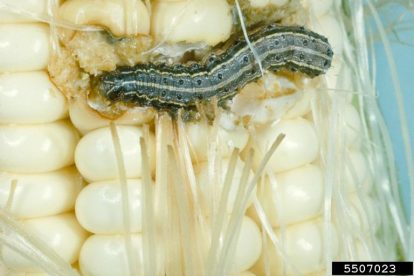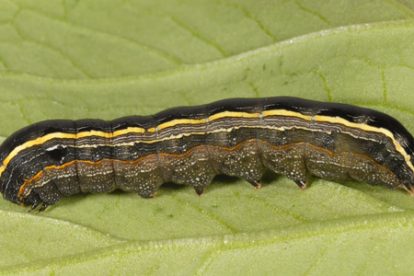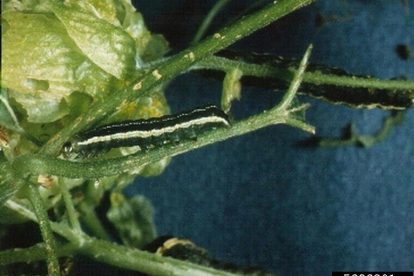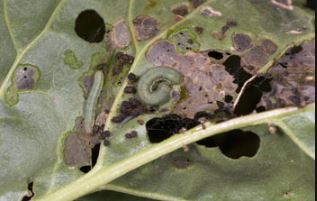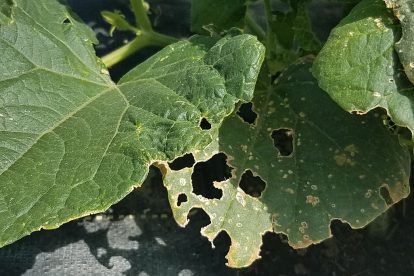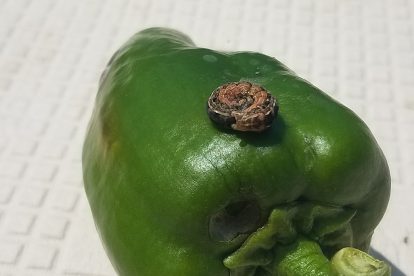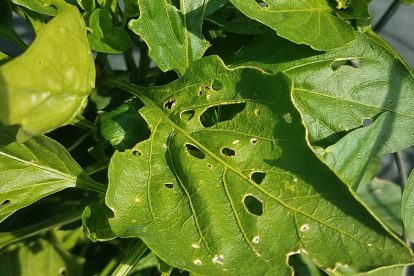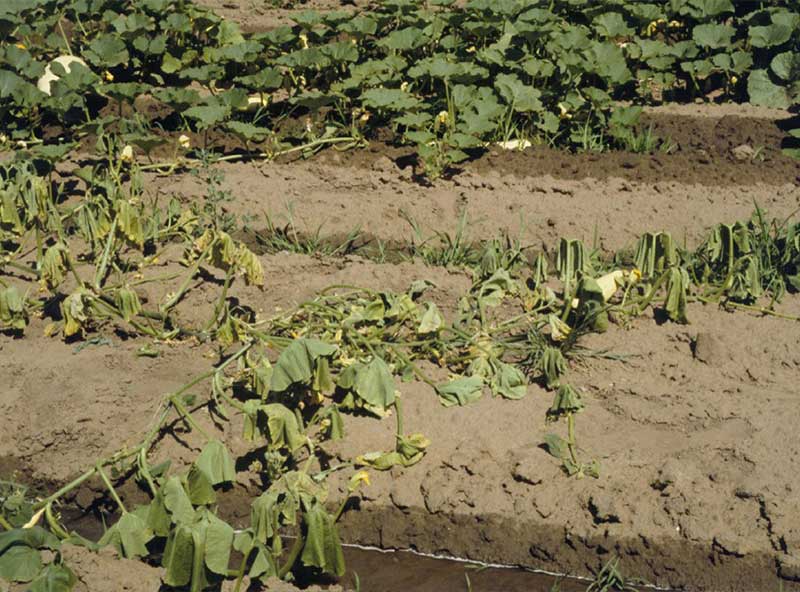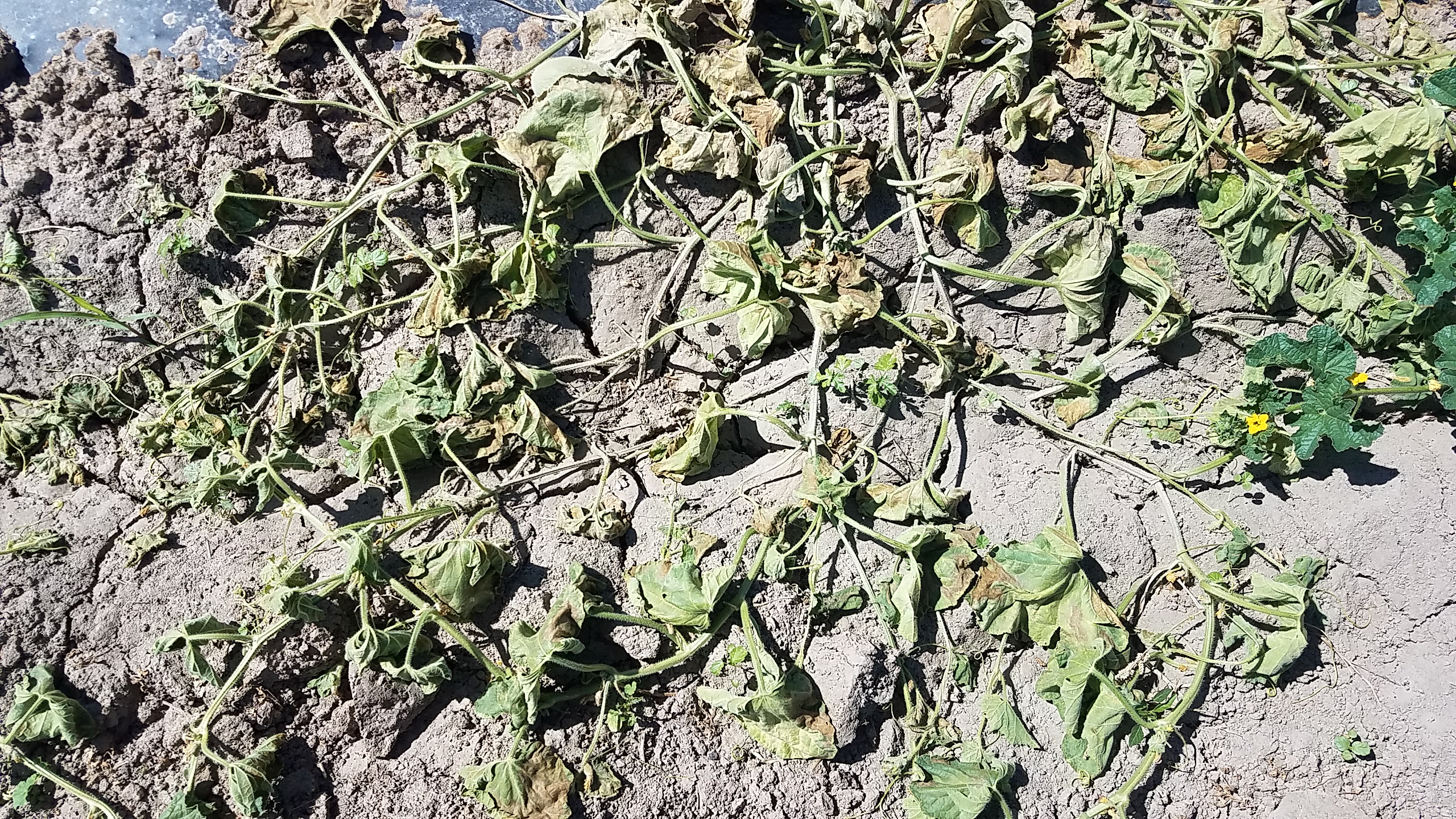Armyworms
Description
Armyworms are being seen throughout rural areas in Utah. Armyworms are the larval stage of night-flying moths in the Noctuidae family. In Utah, four common species we see are the Beet armyworm (Spodoptera exigua), Bertha armyworm (Mamestra configurata), Fall armyworm (Spodoptera frugiperda), and the Western yellow-striped armyworm (Spodoptera praefica). Adults moths range from mottled grey and brown with light-colored markings. Larvae vary in color and develop through 6-9 instars (see images below).
Monitoring
Several vegetable hosts are susceptible to armyworm attacks. These include artichoke, asparagus, beans, beets, broccoli, Brussels sprouts, cabbage, carrot, cauliflower, celery, collards, corn, cucumber, garlic, kale, lettuce, melon, onion, parsley, parsnip, pea, pepper, potato, radish, rhubarb, spinach, sweet potato, Swiss chard, and tomatoes. Armyworms also feed on many herbaceous ornamentals and weeds. Vegetable growers living in rural areas near alfalfa fields are also vulnerable to larger infestations as alfalfa serves as the main host crop. Commercial growers last season were hit hard with armyworms populations due to weather.
Monitor now and look for eggs laid on the leaves of the crops or weeds. Young larvae typically are found near the egg masses in groups. As the larvae mature they disperse, moving towards the center of the plant.
Damage
Armyworm larvae have chewing mouthparts, which they use to skeletonize foliage, create irregular holes, and shred foliage. Larvae have also been observed tunneling in to corn ears or the heads of leafy vegetables.
Life Cycle
Armyworms overwinter as pupae and can have 1-3 generations per growing season. Click here to view the specific life cycle of the Fall Armyworm (Spodoptera frugiperda).
Management
Mechanical Control
- Use traps, set up a blacklight and/or pheromone traps to detect and capture the adult moths.
Cultural Control
- Plant early and plant early maturing varieties of sweet corn. Late planted corn is more susceptible to larval feeding injury due to more plants in the seedling stage when feeding occurs.
- Grow transgenic varieties of sweet corn. Hybrid varieties offer partial resistance to armyworm injury.
Biological Control
- Various generalist predators may feed on armyworms such as ground beetles, spined soldier bugs, insidious flower bugs, birds, skunks, and rodents. Parasitoids such as braconid wasps and tachinid flies may parasitize armyworms worms.
Chemical Control
Commercial Use Options:
- carbaryl (Sevin, Carbaryl)
- methomyl (Corrida, Lannate, Nudrin)
- alpha-cypermethrin (Fastac)
- beta-cyfluthrin (Baythroid)
- bifenthrin (Bifenture, Fanfare, Tundra)
- cyfluthrin (Tombstone)
- permethrin (Permethrin, Ambush, Arctic, Pounce)
- zeta-cypermethrin (Mustang)
- bifenthrin + zeta-cypermethrin (Hero, Steed)
- bifenthrin + avermectin (Athena)
- thiamethoxam + chlorantraniliprole (Durivo, Voliam Flexi)
- spinetoram (Radiant)
- spinosad (Conserve, Entrust, Success)
- emamectin benzoate (Proclaim)
- endosulfan (ThioneX)
- beta-cyfluthrin (Baythroid)
- beta-cyfluthrin + imidacloprid (Leverage 360)
- Baccillus thuringiensis (Biobit, Dipel, Xentari)
- methoxyfenozide (Intrepid)
- indoxacarb (Avaunt)
- chlorantraniliprole (Coragen)
- cyantrainiliprole (Exirel)
- Burkholderia spp. (Venerate)
- Chroimobacterium subtsugae (Grandevo)
- delmethrin (Delta Gold)
- fenpropathrin (Danitol)
- gamma-cyhalotrhin (Lambda, Paradigm, Silencer)
- pyrethrins + piperonyl butoxide (Evergreen)
- zeta-cypermethrin + avermectin B1 (Gladiator)
- pyrethrins + azadirachtin (Azera)
- sodium tetraborohydrate decahydrate (Prev-AM)
Home Use Options:
- bifenthrin (Bonide Eight Flower and Vegetable Granules, Monterey All Natural Mite & Insect Control, Ortho Bug-B-Gon Insect Killer for Lawns & Garden)
- cyfluthrin (Bayer Advanced Vegetable and Garden Insect Spray)
- deltamethrin (Green Light Many Purpose Dust)
- esfenvalerate (Monterey Bug Buster II)
- permethrin (Bonide Eight Vegetable, Fruit, and Flower)
- zeta-cypermethrin (GardenTech Sevin)
- pyrethrins + piperonyl butoxide (Bonine Pyrethrin Garden Insect Spray, Garden Tech Worry Free Insecticide and Miticide)
- pyrethrins + sulfur (Bayer Advance Natria Insect Disease, and Mite Control, Bonide Tomato and Vegetable 3 in 1)
- spinosad (Monterey Garden Insect Spray, Bonide Captain Jack’s Deadbug, Natural Guard Spinosad Spray)
- oils (canola, clove, neem, etc.) (Bayer Advance Natria Multi-insect control, Bonide All Seasons Horticultural and Dormant Spray
Wilt Diseases in Cucurbits
Description
Both Fusarium Wilt and Verticillium Wilt are common soilborne fungal diseases found within Utah’s cucurbit production. Notably in cantaloupes. Fusarium Wilt is caused by the Formae specials (special forms) of the Fusarium oxysporum fungus. Verticillium Wilt is caused by the fungus Verticillium dahliae.
Monitoring
Monitor for Verticillium Wilt during cooler temperatures (68 – 74 degrees Fahrenheit). Symptoms may not appear until flowering and are often expressed on one side of the plant, branch, or leaflets. Monitor for Fusarium wilt when soil moisture is hight and temperatures reach 90 degrees Fahrenheit. Always check field sites that have had fusarium in the past.
Damage
The symptoms caused by both fungi are relatively the same. Wilt, chlorosis, and discoloration of the leaves and stem all occur. Verticillium wilt will have brown discoloration inside vascular tissue, and overall stunted growth, foliar necrosis, and premature plant senescence. Both wilts may cause reduced yields.
Disease Cycle
Verticillium dahliae infection occurs when the fungi infect the roots of its host plants. It overwinters as aa survival structure called a microsclerotium (hard black ball of fungal tissues). Fusarium oxysporum infections occur when the fungi infect the roots of the host plants. (It is also seed-borne) It overwinters in resting spores called chlamydospores. The pathogen is highly specific, each forma speciales is specific to one crop.
Management
There are no chemical controls for either Fusarium oxysporum or Verticillium dahliae. The cultural practices include the following;
- Use resistant varieties when available.
- Planting on raised beds for better water drainage.
- Sanitation, clean equipment and shoes from attached soil.
- Used certified disease-free seed.

